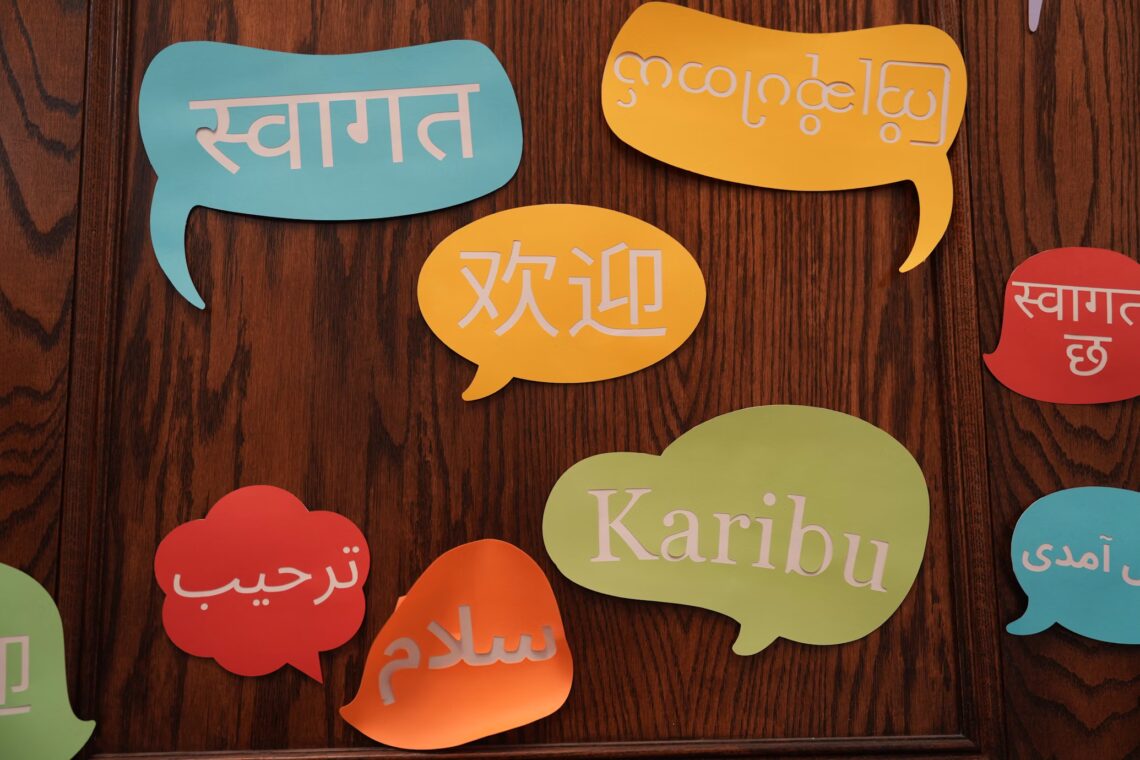Enterprises today rarely operate in one language. Whether you’re a bank in Singapore, an e-commerce brand in Europe, or a logistics firm in the Middle East—your customers expect seamless service in their language, accent, and idiom.
That’s where multi-language voice AI enters the scene—and where the complexity truly begins.
While multilingual chatbots have been around for years, multi-language voice AI is a far tougher engineering challenge. It’s not just about translation. It’s about speech recognition, language modeling, and voice generation—all tuned for local nuance, cultural tone, and regional sound patterns.
Let’s unpack what makes multilingual voice AI so hard to build—and how leading engineering teams are solving it.
1. The Core Challenge: Speech Is Local, Language Is Global
Technically speaking, language models are universal, but speech isn’t.
Voice AI systems face a dual problem: understanding what is said and how it’s said.
Every language brings unique difficulties:
- Phonetics (the sound system): Hindi has aspirated consonants that English models often miss.
- Syntax (sentence structure): Japanese follows Subject–Object–Verb, not Subject–Verb–Object.
- Semantics (meaning context): In Arabic, the same root word can shift meaning dramatically depending on tone.
Even a powerful model like Whisper or GPT-4o can’t fully generalize across accents and linguistic structures without retraining.
In short, multi-language voice AI = multi-problem AI.
2. The Technical Stack: How Multi-Language Voice AI Works
At a high level, multilingual voice AI has four critical subsystems:
a. Automatic Speech Recognition (ASR)
This converts speech into text. For multi-language systems, ASR must detect the language automatically, even mid-sentence—a process called language identification (LID).
The technical hurdle? Real-world speech rarely fits cleanly into one language.
Example: “Can you send the report kal subah?” (English + Hindi)
Solution: Hybrid ASR models that use phoneme-level detection instead of hard language labels. These systems segment speech into sub-second phonetic units and dynamically switch dictionaries.
b. Natural Language Understanding (NLU)
Once transcribed, NLU interprets meaning, intent, and sentiment.
Here’s the catch: intent expressions vary drastically by culture.
A Japanese customer might say, “That might be difficult” to mean “No.” An American user would say it directly.
In practice: NLU engines now include cultural context embeddings, mapping local idioms to universal intents.
c. Translation & Normalization Layer
For enterprise use, text must often be translated back to a standard processing language (like English) before routing through CRM, analytics, or reporting.
Technically: This uses neural machine translation (NMT) pipelines trained on domain-specific corpora.
Challenge: Real-time latency. Translation adds 200–300ms per turn.
To mitigate this, top-performing systems use edge translation caching—storing common utterances locally to reduce processing time by up to 40%.
d. Text-to-Speech (TTS)
Finally, the AI must speak back in the user’s language, accent, and tone.
Enter multilingual TTS synthesis models—systems like VALL-E or Meta’s SeamlessM4T that can mimic intonation and emotional tone across languages.
However, the ethical and technical challenge remains: avoiding voice cloning misuse while retaining authenticity.
3. Under the Hood: Data Is the Real Barrier
Building multilingual voice AI isn’t limited by algorithms—it’s limited by data quality.
- Accent datasets: Most training data is English-heavy. South Asian, African, or Eastern European accents are underrepresented.
- Low-resource languages: For Tamil, Swahili, or Vietnamese, annotated speech data is scarce.
- Code-switching samples: Few corpora include natural bilingual speech.
To overcome this, research teams now use synthetic data augmentation—generating realistic training samples using GAN-based voice cloning.
“We created synthetic bilingual speech for underrepresented languages to balance datasets and reduce bias,” says Dr. Miguel Alvarez, Senior Research Scientist, Voicenet Labs.
The results are promising: recognition accuracy improved from 73% to 89% on low-resource languages after augmentation.
4. Latency, Accuracy, and Compute Trade-offs
Here’s a harsh truth: supporting more languages increases compute cost exponentially.
Each language model adds:
- Unique phonetic lexicons
- Separate NLU weights
- Distinct voice profiles for TTS
In cloud-only architectures, this can mean 400–600ms extra latency per conversational turn.
For real-time experiences, that’s unacceptable.
Engineering workaround: Move inference closer to the user with edge computing.
Deploy smaller multilingual models (quantized or pruned) on local servers or gateways, keeping inference below 350ms even under multi-language load.
This approach not only boosts speed but also enhances data privacy—especially important in industries like healthcare or banking.
5. Language Detection: The Hidden Bottleneck
Detecting the spoken language quickly and accurately is one of the toughest challenges.
Traditional LID models used frequency-based features (MFCCs). Modern systems now use self-supervised embeddings trained on multilingual corpora.
Yet even these fail under noisy environments or rapid code-switching.
Example: “Hey, schedule my doctor appointment kal dopahar” (half English, half Hindi).
Solution: Combine acoustic features with semantic clues from the NLP layer.
If the ASR hears “appointment” and “kal,” the model can infer that the base language is Hindi-English hybrid and adapt dynamically.
Key insight: Robust multilingual voice AI requires cross-layer cooperation—ASR helping NLU, NLU guiding LID.
6. Accents and Pronunciation Drift
Accent variance is one of the most underestimated challenges in voice AI.
Two English speakers from Delhi and Dublin can differ more than Hindi and Marathi speakers.
To counter this, engineers now rely on phoneme adaptation models—AI that learns how the same sound is pronounced differently across geographies.
For instance, “data” can be /ˈdɑːtə/ or /ˈdeɪtə/. The model learns both through fine-tuning with accent embeddings.
In practice: Enterprise-grade systems achieve 95%+ recognition accuracy across 12 English accents by combining phoneme embeddings with localized acoustic data.
7. Localization Beyond Language: Cultural Context
Language is only half the story.
A truly multilingual voice agent must also localize behavior.
That means adapting:
- Tone (formal vs casual)
- Response style (direct vs indirect)
- Interaction norms (interruptions, politeness markers)
For example, in Japan, agents add honorifics (“san”) automatically. In Brazil, the tone becomes warmer and more conversational.
This isn’t NLP—it’s cultural modeling powered by contextual metadata (region, time, user preference).
The result is not just correct language—but correct emotional bandwidth.
8. Enterprise Implementation: Layered Deployment Architecture
In real-world deployments, multilingual voice AI follows a layered modular architecture:
| Layer | Function | Key Technology |
|---|---|---|
| Input | Audio ingestion + preprocessing | Noise reduction, LID |
| Core | Speech recognition + NLP | Multilingual ASR, contextual NLU |
| Middleware | Routing + translation | NMT, caching |
| Output | Speech synthesis | TTS + voice adaptation |
| Analytics | Reporting & tuning | Language-level KPIs |
Each layer must remain loosely coupled, allowing enterprises to plug in region-specific models without retraining the whole stack.
This modularity ensures scalability from pilot rollouts to global deployments across 20+ countries.
9. Security and Compliance Across Borders
When handling voice data across languages, data sovereignty becomes critical.
Many countries restrict where audio and transcripts can be stored (GDPR in Europe, PDP Act in India, LGPD in Brazil).
Technical best practices:
- Store local voice data on regional servers.
- Use federated learning for model improvement—models learn locally, share weights globally.
- Apply voice data encryption both in motion and at rest.
This approach ensures compliance without compromising AI performance.
10. Future Outlook: The Rise of Polyglot Voice Models
We’re now entering the polyglot model era—LLMs capable of simultaneous multilingual reasoning.
Instead of separate models per language, future architectures will use shared phonetic and semantic embeddings.
Imagine a voice AI that can fluidly switch between English, Hindi, and Arabic in the same session—understanding emotion, idioms, and context seamlessly.
“Polyglot models will collapse the gap between global reach and local nuance,” says Dr. Lina Petrova, Director of AI Systems at GlobalSpeak Technologies.
The next few years will redefine “language support” from a feature into a fundamental capability.
Final Reflection
Building multi-language voice AI isn’t a translation problem—it’s a systems problem.
It requires rethinking how voice, language, and culture intertwine.
From ASR to NLU to TTS, every layer must cooperate dynamically, adapting to linguistic and cultural complexity in real time.
The goal isn’t just to make AI multilingual—it’s to make it multicultural.
That’s what separates an app that “speaks” many languages from one that’s understood in all of them.






